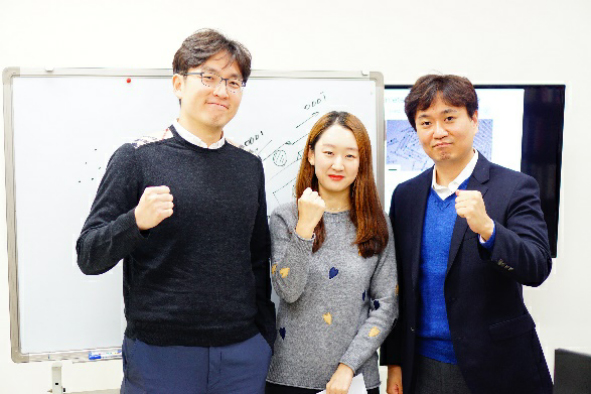As a research project of KAIST Institute for the NanoCentury, Professor Doh Chang Lee’s research team is working on enhancing the optical polarization of nanomaterials by precisely controlling the growth of anisotropic nanostructures. The project was started in 2016 to develop a highly efficient polarized nanomaterial as an emitter in a quantum dot display. Among the candidate nanomaterials, semiconductor core/shell nanorods (NRs) have been actively pursued in the area of quantum dot displays, as they can bestow a high degree of polarized photo-response with a high quantum yield. The polarization property is strongly influenced by morphological and structural variation of emitting materials, and thus NRs must also be synthesized with exquisite control. However, despite the demand, the growth mechanism of NRs has not been understood and largely has relied on empirical observations. Due to the absence of a universal growth principle, there has been a limitation to understand and enhance their properties. For example, when a NR grows on a core into a core/shell hetero-NR, the growth rate of the NR into two axial directions is known to show a certain ratio without controllability. The core is sometimes located near one side of the NR, but at other times it is rather close to the center of the NR. Many researchers have raised an issue about the resulting uncontrollable core position in core/shell NRs and the effect of core position on their properties.
Herein, we demonstrate core-position-controlled core/shell nanorods based on a mechanistic understanding of NR growth at a molecular level. A core particle can be placed from the center to end of a NR shell by controlling the growth rate of two NR tips. This enables rigorous study on the effect of core position on the optical polarization property. As the core is moved, a close relationship where the aspect ratio of the short NR part with the center of the core as a reference should be above 2 for a high degree of optical polarization is revealed. This result emphasizes the significance of controllable anisotropy for enhancing the polarization property.

Core-position-controlled NR structures have great potential as candidates for a broad range of applications due precise controllability of their anisotropy and excitonic structure. Additionally, the valuable contribution of this work is that the growth principle provides an important framework for expanding diverse anisotropic nanomaterials for a new growth agenda.

Prof. Doh Chang Lee (Department of Chemical and Biomolecular Engineering)
Homepage: http://dclee.kaist.ac.kr
E-mail: dclee@kaist.ac.kr, dahin@kaist.ac.kr






